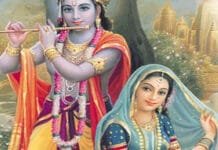INVC NEWS
New Delhi : Belpatra, or the leaves of the Bael tree, holds a special place in the hearts of devotees of Lord Shiva. Known for its purifying qualities, it’s offered to the deity during worship with the belief that it fulfills the wishes of devotees. Recently, a new trend has emerged where devotees write their names or wishes on Belpatra before offering it to Lord Shiva. This has sparked a debate: does writing on Belpatra make Lord Shiva angry? Let’s dive deep into the traditions, scriptures, and significance of this practice.
Belpatra: A Sacred Offering
Belpatra is not just any leaf; it’s a symbol of purity and sanctity. According to Hindu scriptures, offering Belpatra to Lord Shiva pleases the deity immensely. Each trifoliate Belpatra leaf is said to represent the trinity of Brahma, Vishnu, and Mahesh (Shiva), thus making it highly auspicious.
The Importance of Belpatra in Worship
- Symbol of Purity: Belpatra is believed to purify the mind and soul, making it an essential element in Shiva worship.
- Divine Connection: The trifoliate structure of the leaf symbolizes Lord Shiva’s three eyes, three gunas (qualities), and the trinity of Hinduism.
- Spiritual Benefits: Offering Belpatra is thought to remove negativity and bring positive energy into the devotee’s life.
The New Trend: Writing on Belpatra
In recent times, a trend has surfaced where devotees write their names or wishes on Belpatra before offering it on the Shivling (the symbolic representation of Lord Shiva). This practice raises several questions about its appropriateness and whether it aligns with traditional worship methods.
Why Do Devotees Write on Belpatra?
- Personalization of Worship: Some believe that writing their names or wishes makes their prayers more personal and direct.
- Modern Interpretation: In an era where customization is valued, this trend is seen as a way to make the ritual more meaningful.
Scriptural References and Traditional Methods
What Do the Scriptures Say?
Interestingly, there is no mention in ancient scriptures about writing names or wishes on Belpatra. The famous book Rudrashtadhyayi, published by Geeta Press, Gorakhpur, elaborates on the proper method of offering Belpatra but does not endorse writing on it.
Traditional Method of Offering Belpatra
- Three Leaves: Belpatra should ideally have three leaves and should be offered in its pure form.
- Placement: The leaves should be placed upside down on the Shivling, with the short stalk pointing upwards.
- Purity: Maintaining the natural purity of Belpatra is crucial, and any form of tampering, including writing on it, is not mentioned or encouraged.
The Debate: Does Writing on Belpatra Make Lord Shiva Angry?
Arguments Against Writing on Belpatra
- Scriptural Inconsistency: The scriptures emphasize the purity and simplicity of offerings. Writing on Belpatra is seen as altering its natural state, which may not be favorable.
- Purity Concerns: Tampering with the leaf by writing on it could break its purity, which is essential in worship.
- Traditional Beliefs: Faith and simplicity are core to Shiva worship. The traditional method doesn’t involve writing, thus staying true to these practices is recommended.
Arguments Supporting Writing on Belpatra
- Intent Matters: Some argue that the intention behind the offering is more important than the method. If the writing is done with pure devotion, it may not anger the deity.
- Modern Adaptations: As rituals evolve, incorporating personal touches could be seen as deepening one’s spiritual connection.
Conclusion
The question “Does writing your name on Belpatra make Lord Shiva angry?” is rooted in the balance between tradition and personal devotion. While scriptures and traditional methods advocate for offering Belpatra in its pure form, modern practices reflect a desire for personalization in worship.
Ultimately, the purity of one’s heart and the sincerity of devotion are what matter most in the eyes of Lord Shiva. Whether you choose to write on Belpatra or not, it’s your faith and belief that will guide you. Always approach your spiritual practices with respect, understanding, and a deep sense of reverence for tradition.
FAQs
Q: Can I write anything other than my name on Belpatra?
A: According to traditional beliefs, it’s best to keep Belpatra in its pure form. Writing names or wishes is not recommended.
Q: Is there any exception to writing on Belpatra?
A: It is believed that writing the name of Lord Shri Ram on Belpatra is acceptable and can be offered to Lord Shiva.
Q: What is the proper way to offer Belpatra?
A: Belpatra should have three leaves and be placed upside down on the Shivling with the short stalk pointing upwards.
Q: Does offering Belpatra with writing invalidate the offering?
A: While it may not invalidate the offering, traditional practices suggest that it’s best to avoid writing to maintain the natural purity of the leaf.
In the end, it’s important to remember that true devotion comes from the heart. Whether you follow traditional methods or incorporate personal touches, what truly matters is the sincerity and purity of your devotion to Lord Shiva.
















